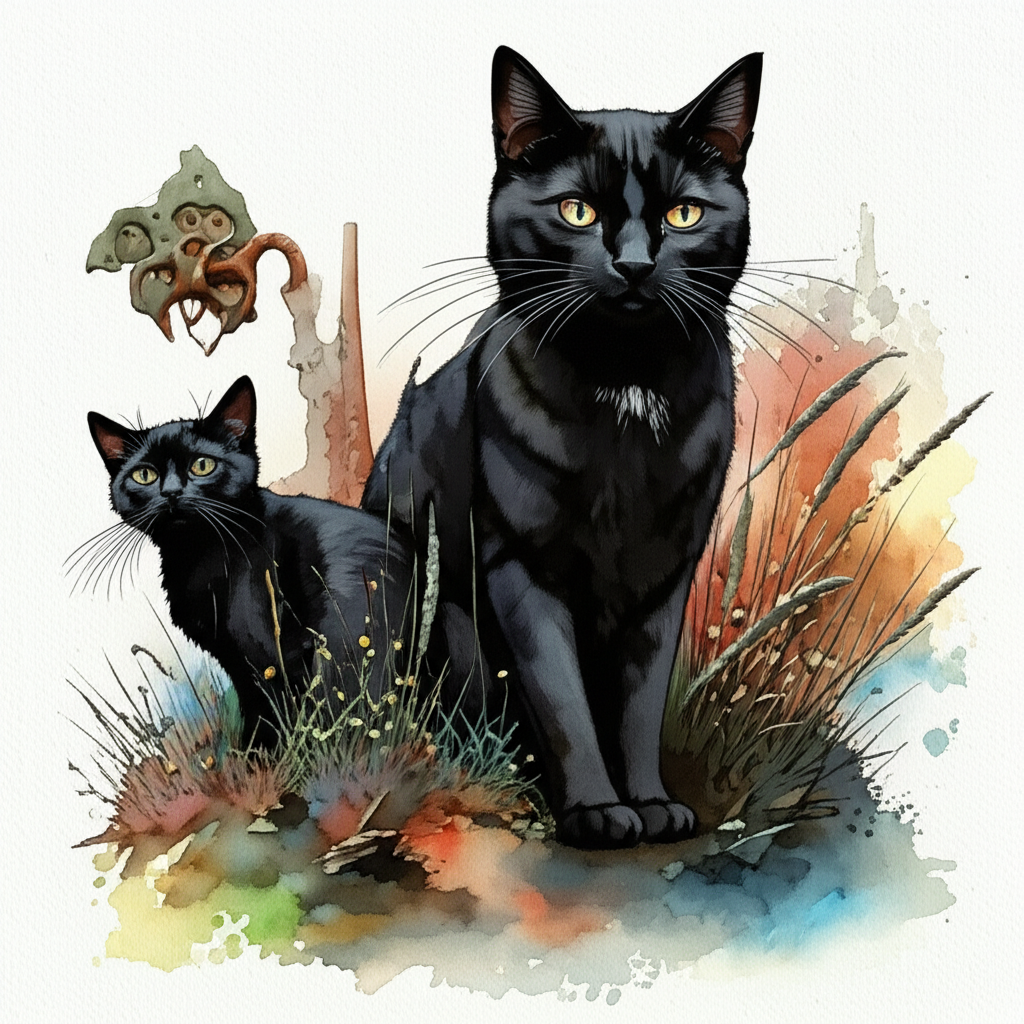
Black cats are deeply embedded in global folklore, and superstitions surrounding them persist in modern societies, demonstrating a wide range of contradictory beliefs about their significance. While some cultures consider black cats symbols of good luck and prosperity, others view them as harbingers of misfortune and evil.
Historical Background
The association of black cats with superstition can be traced back to ancient times. In Norse mythology, Freya, the goddess of love, beauty, and fertility, was said to travel in a chariot drawn by black cats. However, some interpretations suggest these cats later transformed into demonic horses, thus linking them to the Devil. This duality in early symbolism laid the groundwork for contrasting views on black cats.
Cultural Beliefs
The Middle Ages cemented the negative associations of black cats in many Western cultures. They were often portrayed as the ‘familiars’ of witches, serving as companions and supernatural assistants. This depiction contributed significantly to the distrust of black cats, particularly in regions influenced by Puritan beliefs. In the United States, for example, the early Puritan settlers, deeply suspicious of anything linked to the Devil and witchcraft, readily adopted the negative view of black cats. Even today, many Americans consider it bad luck if a black cat crosses their path, believing it signifies that they have been noticed by the Devil.
Contrastingly, beliefs differ across various cultures. In Germany, the direction in which a black cat crosses one’s path is significant: right to left indicates bad luck, while left to right signals good fortune. In Scotland, a black cat appearing at your doorstep is considered a sign of incoming prosperity. Meanwhile, in China, black cats are traditionally seen as omens of hunger and poverty. Italian folklore dictates that if a black cat rests on the bed of a sick person, it foreshadows the patient’s impending death.
Evolution of the Superstition
In England, the superstition surrounding black cats has evolved to consider them lucky if they walk towards you. However, this is just one variation of the belief, as numerous other interpretations exist worldwide. The origins of these differing views have become obscured over time. The 16th-century English author William Baldwin, in his satirical work ‘Beware the Cat’ (1561), popularized the notion that cats were actually witches disguised in animal form, stating that ‘A Cat hath nine lives, that is to say, a witch may take on her a Cat’s body nine times.’ This reflects a common belief of the era.
Modern Interpretations
Despite widespread negative associations in some areas, particularly in the United States, Great Britain and Ireland often consider it lucky to own or encounter a black cat, especially on important occasions like weddings or the start of a journey. A well-known anecdote tells of King Charles I, who was so convinced of his black cat’s good luck that he kept it under constant guard. Upon the cat’s death, he reportedly lamented that his luck had run out. The very next day, King Charles I was arrested by Oliver Cromwell’s troops and was ultimately beheaded two years later, a circumstance which some interpret as a consequence of losing his feline lucky charm.
The superstitions surrounding black cats continue to be a fascinating example of how cultural beliefs, folklore, and historical events shape our perceptions of the world around us. Whether regarded as lucky or unlucky, black cats remain a potent symbol in the collective human imagination.